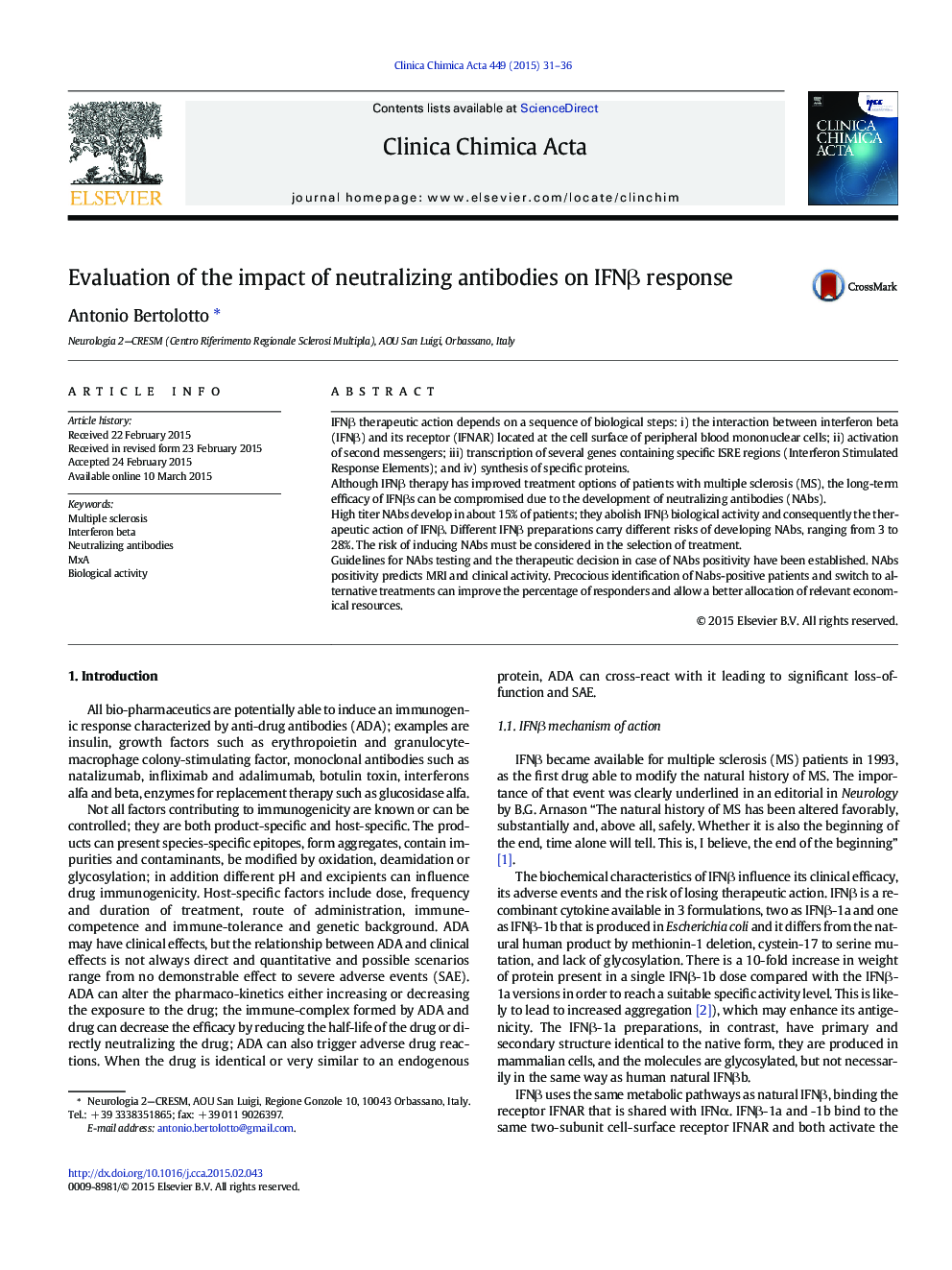| Article ID | Journal | Published Year | Pages | File Type |
|---|---|---|---|---|
| 1965256 | Clinica Chimica Acta | 2015 | 6 Pages |
•NAbs quantification improves management of IFNβ treated patients.•High titer Nab-positive patients should change treatment.•MxA and NAbs quantification identify a subset of IFNβ non-responders.
IFNβ therapeutic action depends on a sequence of biological steps: i) the interaction between interferon beta (IFNβ) and its receptor (IFNAR) located at the cell surface of peripheral blood mononuclear cells; ii) activation of second messengers; iii) transcription of several genes containing specific ISRE regions (Interferon Stimulated Response Elements); and iv) synthesis of specific proteins.Although IFNβ therapy has improved treatment options of patients with multiple sclerosis (MS), the long-term efficacy of IFNβs can be compromised due to the development of neutralizing antibodies (NAbs).High titer NAbs develop in about 15% of patients; they abolish IFNβ biological activity and consequently the therapeutic action of IFNβ. Different IFNβ preparations carry different risks of developing NAbs, ranging from 3 to 28%. The risk of inducing NAbs must be considered in the selection of treatment.Guidelines for NAbs testing and the therapeutic decision in case of NAbs positivity have been established. NAbs positivity predicts MRI and clinical activity. Precocious identification of Nabs-positive patients and switch to alternative treatments can improve the percentage of responders and allow a better allocation of relevant economical resources.
